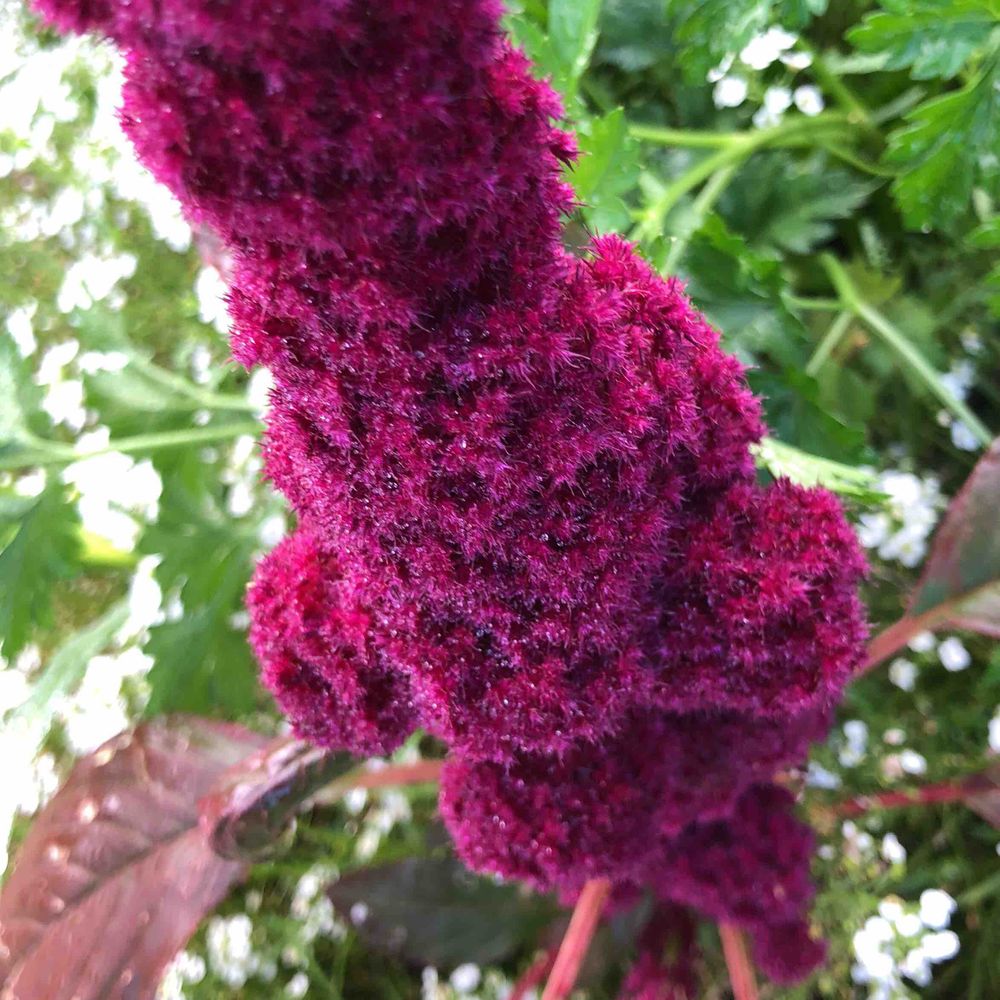Love-lies-bleeding
(Amaranthus caudatus)

Description
Amaranthus caudatus is a species of annual flowering plant. It goes by common names such as love-lies-bleeding, pendant amaranth, tassel flower, velvet flower, foxtail amaranth, and quilete Many parts of the plants, including the leaves and seeds, are edible, and are frequently used as a source of food in India and South America – where it is the most important Andean species of Amaranthus, known as kiwicha. (see also Amaranth seed and Andean ancient plants) This species, as with many other of the amaranths, is originally from the American tropics. The exact origin is unknown, as A. caudatus is believed to be a wild Amaranthus hybridus aggregate. The red color of the inflorescences is due to a high content of betacyanins, as in the related species known as "Hopi red dye" amaranth. Ornamental garden varieties sold under the latter name are either Amaranthus cruentus or a hybrid between A. cruentus and A. powelli. In indigenous agriculture, A. cruentus is the Central American counterpart to South American A. caudatus. During the Victorian era, specific flowers had different meanings. Love-lies-bleeding stood for hopeless love or hopelessness in the Victorian language of flowers. A. caudatus can grow anywhere from 3 to 8 feet in height, and grows best in full sun. It can handle a variety of conditions, both humid and arid. It is easily grown from seed. In most of its range, it is planted as a summer annual. In temperate regions, plants can be started indoors in early spring and transplanted outdoors after the last frost.
Taxonomic tree:







